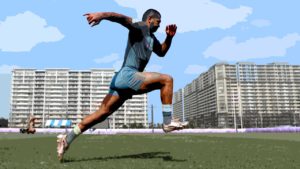We live in a time where more is usually considered better. More money, more horsepower, more Instagram followers, more social media “likes,” more gigabytes, more protein – we want more!
This more is better attitude has also been absorbed into fitness and strength training. A lot of workouts are high volume, high intensity, or both. While such an approach can work for the average fitness enthusiast, it may not be the best way for ruggers to train.
Rugby, like all competitive sports, requires a high level of all-round fitness, conditioning, and strength. You need to find time to hit the gym, run, do speed and agility training, attend team training, and do all the rehab and prehab necessary to keep your battered body on the field. It’s a big commitment.
A lot of fitness programs, and in particular strength training programs, do not allow for this. They assume you’ll have the time and the energy to go the gym 4-6 times a week for 60 to 90 minutes each time. That is a huge commitment!
Many fitness and strength training programs, because of their “more is better” design, essentially use a sledgehammer to break a nut. They work because they pummel your body into submission. They go far beyond what you need to do to produce results. For ruggers, that can be a real problem.
Strength training – the traditional approach
Take a moment and think about your last gym workout. How many exercises and sets did you do for each muscle group? If you are following a traditional (and often bodybuilding-inspired) strength training workout, the answer will be “a lot!”
This is a fairly typical lower body strength training workout:
Programs like this can work, but they are also very inefficient. There are a lot of overlaps where the same muscles are worked in successive exercises. You’ll also spend more time resting than you will exercising. In addition, as the workout progresses, you’ll be so tired that you won’t be able to do justice to the exercises that come later. Quality overload has been replaced by the pursuit of fatigue, often for fatigue’s sake.
A good strength training workout should be designed to produce results, i.e., make you stronger. If you analyze most workouts, they appear to be designed with a very different goal in mind – wearing you out!
Fatigue is easy to achieve. Just do lots of sets of several similar exercises. Accumulate 15-20 sets of training for the same muscle group, and you will inevitably feel tired by the end. However, that is not an efficient use of your time and energy.
The trick to designing an effective strength training program is determining how to get the best results from the least amount of time and effort. Time and effort are precious commodities and should be spent wisely, and not just thrown away without good reason.
The drawbacks of traditional strength training programs
High volume training programs work very well for people whose main form of exercise is hitting the gym. They have both the time and energy to lift weights four or more times a week for a couple of hours at a time and then dedicate to recovery. After all, once they are done at the gym, they can head home and rest up until it’s time to train again.
Ruggers are not so lucky. The chances are that tomorrow, or even later that same day, you’ll need to lace up your rugby boots or put on your running shoes for your next practice or workout. High volume strength training can only really work if you are able to rest as hard as you work out, and most ruggers can’t.
The reality is that the majority of the benefits (i.e., increased strength) you get voluminous workouts are the result of the first couple of sets of the first couple of exercises. The extra work will enhance your results, but not enough to justify all that extra time and effort. It’s like buying a car for $1000 but then spending an addition $9,000 on floormats and seat covers. Yes, you get a bit more in return, but the cost is exponentially high.
For ruggers, the cost of this type of training is:
- Lack of time for other types of training
- Joint pain and soft-tissue injuries
- All-but constant muscle soreness and central nervous system fatigue
- Only being able to train each muscle group once per week
- Very limited variety of exercises per workout
- Potential muscle imbalances due to missed workouts
Strength training – do less for better results
Rather than trying to see how much training volume you can tolerate, it makes much more sense to see how little training you need to do to get the results you want. For example, if running three miles gets you match-fit, why run ten? Unless you love running, it’s doubtful that you’ll want to run further than necessary.
In strength training, the absolute minimum amount you can do is one set. That single set is responsible for the majority of the benefits you get from lifting weights. Doing more sets will improve your results marginally, but the return is much less than the extra effort and energy required.
However, doing just one set of squats and expecting to develop rugby-strong legs would be foolhardy. While squats are a good exercise, they aren’t the only one you need. Instead, you need a variety of exercises to ensure you work each muscle and joint in the lower body equally. This will prevent muscle imbalances and also enhance skill and athleticism.
If you only do one set of each exercise in your workout, you’ll have more than enough time to do many more exercises per muscle group. More variety means less joint and soft tissue overload.
For example, instead of doing five sets of squats, why not do one set each of squats, Bulgarian split squats, Romanian deadlifts, lateral band walks, and box jumps. You’ll be able to put 100% effort into each set, and because volume per workout is much lower, you’ll recover faster and be able to repeat that same workout two or even three times per week. When it comes to increasing strength, workout intensity, and frequency is much more important than volume.
But, how do you go about overhauling your strength training program? That’s where The Ruck Science 20-1-20 Strength Training Program comes in.
Ruck Science 20-1-20 Training Program
The Ruck Science 20-1-20 Training Program has been designed by ruggers, for ruggers. It’s a low volume program built around tried-and-tested exercise principles. It provides a real alternative to the traditional high volume approach to strength training that most rugby players use.
The features and benefits of this program include:
- Huge exercise variety for better results and less risk of injury
- Much shorter workouts (about 30 minutes, three times per week)
- Measurable progress from one workout to the next
- Increased work capacity
- Weekly and monthly progressions
- No muscle imbalances
- Added indirect cardio benefit
- Suitable for all levels of exerciser, and even those returning from injury
This is not your average “more is better” strength training program. Instead, it is designed to get the best possible results from the least amount of training time. It’s a full 16-week plan that you can start at any time – not just in the off-season. With shorter, more targeted workouts, you’ll have all the time and energy you need to do justice to all the other aspects of rugby training and recover better too.
If your strength training workouts are not producing the results you want, take up too much of your valuable time, or simply take more out of your body than they should, the Ruck Science 20-1-20 Training Program is for you. It’s very different from what most ruggers are used to, but that’s precisely why it works!
Remember, doing the same thing over and over and expecting different results is the very definition of insanity. If your current training plan isn’t delivering the goods, it’s time for a change. The Ruck Science 20-1-20 Training Program is the change your body needs!


